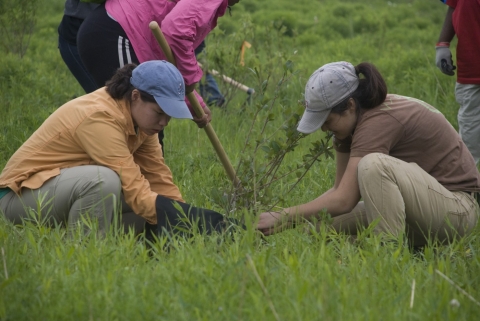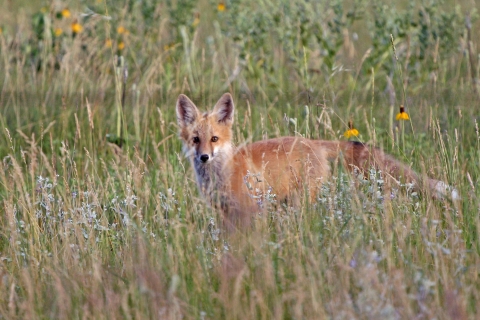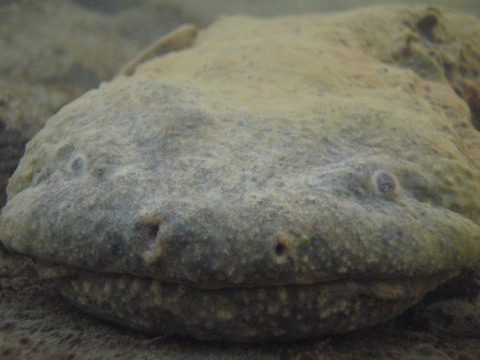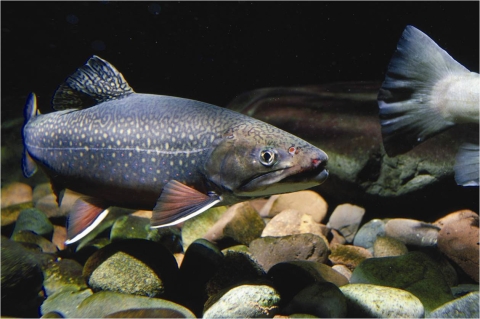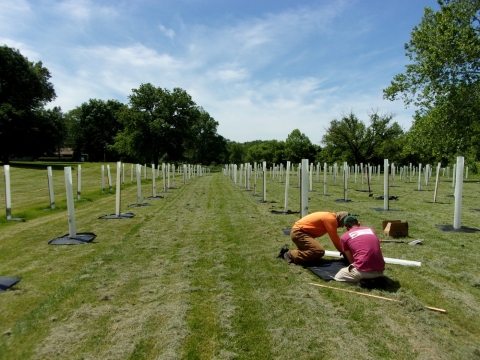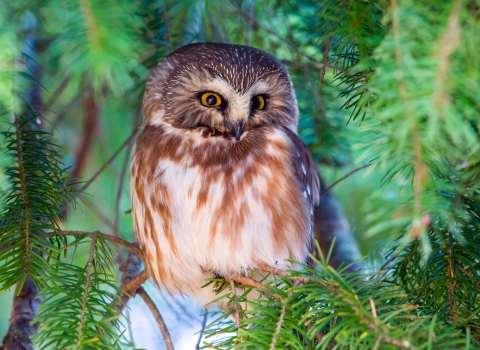Can a tree in New York improve the quality of water in the Atlantic Ocean? That depends on where it’s planted.
The Upper Susquehanna Coalition (USC) Buffer Team has been planting trees that benefit water quality from New York and Pennsylvania to the Chesapeake Bay. The trees, planted along rivers and streams in the Upper Susquehanna watershed, filter water before it drains into the Susquehanna River. The river flows 400 miles south through New York, Pennsylvania, and Maryland — providing drinking water for millions along the way — before entering the Chesapeake Bay, the largest estuary in the U.S.
The USC is a coalition of 22 soil and water conservation districts in New York and Pennsylvania. Their Buffer Team received a 2020 Arbor Award for planting more than 10,000 native trees. The team engaged more than 100 student volunteers and educated more than 1,500 people about riparian riparian
Definition of riparian habitat or riparian areas.
Learn more about riparian areas.
“Riparian areas occur between terrestrial and aquatic environments and catch storm water, nutrients, and sediments,” said Wendy Walsh, USC’s watershed coordinator. “Any land along a body of water, such as a floodplain or streambank, is a riparian zone.”
A full-service streambank
Imagine rainwater running downhill after a storm, across a field and into a stream. If the streambank has healthy vegetation, then the rainwater is filtered by trees, shrubs and grasses before entering the stream. The water is also slowed, reducing flooding downstream.
The riparian zone acts as a buffer between land and water, filtering impurities in run-off from developed and agricultural areas, lowering water temperatures, and raising dissolved oxygen levels for fish and other aquatic organisms that breathe underwater.
Streamside vegetation also offers nesting habitat for migrating birds, shade for fish, and water access for mammals such as deer and fox. Many aquatic species in the Northeast, such as eastern brook trout and eastern hellbender, rely on clean, cool water for spawning and survival. Branches falling into the water from nearby trees and shrubs provide habitat for water flies, such as mayflies and caddisflies.
Native trees, such as sycamores, red maples, swamp white oaks, river birches and dogwoods, serve a unique and important role in riparian zones. Their deep roots hold soil in place and prevent bank erosion. Trees also remove carbon dioxide — a greenhouse gas that contributes to climate change climate change
Climate change includes both global warming driven by human-induced emissions of greenhouse gases and the resulting large-scale shifts in weather patterns. Though there have been previous periods of climatic change, since the mid-20th century humans have had an unprecedented impact on Earth's climate system and caused change on a global scale.
Learn more about climate change — from the atmosphere, safely storing the carbon. Healthy riparian areas with lots of trees and higher rates of carbon storage are more resilient to climate change.
Bringing back the buffer
Many riparian areas have been lost to suburban and urban development, logging, and road construction. In rural areas, riparian habitat may be threatened by farming or grazing along stream and river edges.
To turn the tide in favor of riparian zones, the USC Buffer Team works with partners in counties throughout New York and Pennsylvania. Using a flexible and opportunistic approach, they collaborate with landowners and state and federal conservation agencies like the New York State Department of Environmental Conservation (NYSDEC), the U.S. Forest Service, and the U.S. Fish and Wildlife Service.
The USC uses a mix of thirty different trees and shrubs, from lowland to upland species, to benefit riparian zones and achieve custom results for private parcels. Customized riparian plantings with tulip trees, dogwoods and elderberries benefit pollinators, while plantings with sugar maples and walnuts provide opportunities for timber harvest.
USC Buffer Team’s riparian plantings may be viewed at Birdseye Hollow State Forest in Steuben County, New York, or Hickories Park in Owego, New York. Two acres of lawn at Hickories Park are now maintenance-free, no mowing required.
You can plant, too!
If you’re ready to participate in on-the-ground conservation, you can volunteer through USC’s Buffer Team. They’ll be happy to put you to work with a shovel, stakes and tree tubes.
USC Buffer Team planting saplings in tree tubes at Hickories Park in Owego, New York. Upper Susquehanna Coalition
Landowners and agencies can contact their local soil and water conservation districts, which promote federal, state and local tree-planting programs — including the NYSDEC’s Trees for Tribs program. The Service’s Partners for Fish and Wildlife program may also be a good resource for landowners looking to restore riparian areas with trees, shrubs, or grasses.
“Access to plants and materials can be simple and quick,” said Lydia Brinkley, USC Buffer Team coordinator, “Our staff collaborates effectively and stays in practice when it comes to planting trees!”
With more than 3,000 riparian acres reforested in the last ten years, the Upper Susquehanna Coalition plans to continue not only planting trees, but monitoring the newly planted areas to ensure that trees are thriving and forests are taking hold. Tree by tree, root by root, healthy riparian vegetation in New York and Pennsylvania filters run-off and improves water quality for millions downstream of the Upper Susquehanna watershed.


